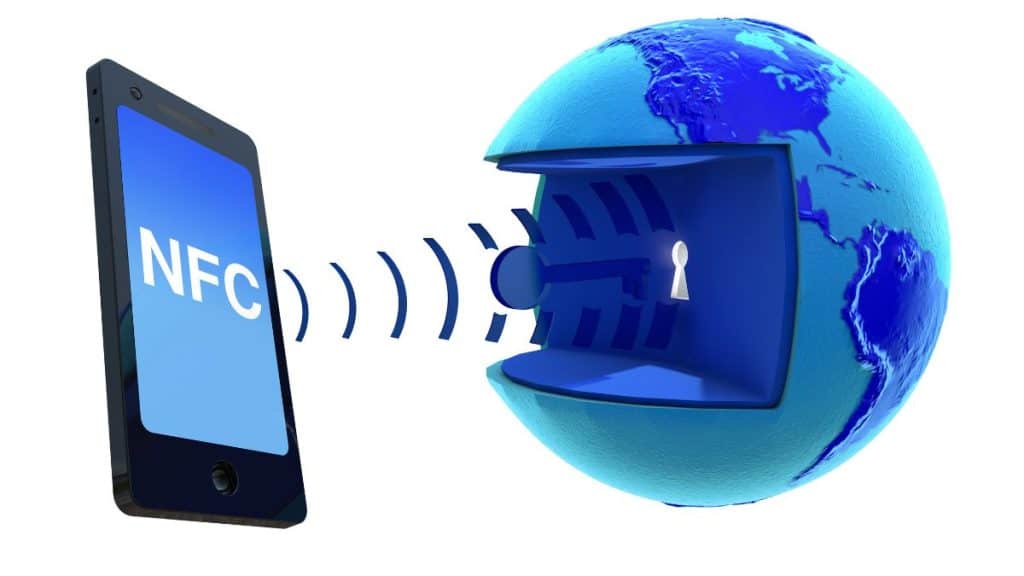If you’ve ever opened your phone’s settings and spotted “NFC,” you might have wondered what it’s doing there. It’s not an app, and it’s not just a random option buried in menus. NFC, short for Near Field Communication, is a minor feature with significant uses.
Think of it like a quick handshake between devices. Your phone’s NFC chip and antenna send and receive small bursts of data when two devices are very close. It’s the reason you can tap to pay at a store, pair gadgets in seconds, or scan tickets without swiping or typing.
What Is NFC on a Phone?

NFC is a type of short-range wireless technology found in most modern smartphones. It lets your phone talk to other NFC-enabled devices or tags when they’re just a few centimeters apart. This is the same tech behind many contactless bank cards and transit passes.
Unlike Bluetooth or Wi-Fi, NFC only works in close range. That’s a built-in safety feature. You can’t accidentally connect to something across the room, and that helps keep transactions more secure.
How Does NFC Work on Smartphones?
The process is quick. Inside your phone is a tiny NFC antenna. When you place it near another NFC device or tag, both sides create a short link using electromagnetic induction. Data moves instantly, no manual pairing, no long setup.
There are two main modes. Passive NFC means one side has no power and just sends stored info, like a travel card. Active NFC allows both sides to send and receive, similar to two phones sharing a file.
When you tap to pay with Google Pay or Apple Pay, your phone sends encrypted payment details to the POS terminal in under a second. All of it happens behind the scenes while you’re still holding your phone in place.
Common Uses of NFC in Our Daily Life
NFC isn’t just a hidden setting — it’s something you probably use more often than you realise. From payments to gaming, it’s built into many daily tasks. Here are some of the most common ways people use it:
- Contactless payments with Google Pay, Apple Pay, or Samsung Pay at stores, cafes, and gas stations.
- Public transport ticketing allows you to tap your phone to board trains, buses, or subways without a physical ticket.
- Access control for offices, gyms, or events using NFC-enabled passes or ID cards.
- NFC tags are programmed to trigger actions such as enabling Wi-Fi, sending a text, or opening a specific app.
- Quick pairing with Bluetooth devices such as speakers, headphones, or printers.
- Gaming features, like scanning Nintendo Amiibo figures to unlock in-game content.
Is NFC Safe to Use?
Most people worry about safety when they hear the word “wireless.” NFC is built with layers of protection. The short range, usually under 4 c, means a stranger can’t connect from across the room. Payments are protected by encryption and tokenisation, so your actual card number is never sent.
That said, NFC is not magic. Someone with the right tools could skim unprotected cards if they get incredibly close. This is why mobile payment apps like Google Pay and Apple Pay require authentication, such as a fingerprint, Face ID, or PIN, before sending payment info.
How to Turn NFC On or Off on Android or iPhone?
If you’ve never used NFC before, it might be off by default. Checking and adjusting it only takes a few seconds.
1. On Android
- Swipe down to open Quick Settings.
- Look for the NFC icon and tap it to turn it on or off.
- Go to Settings > Connections > NFC for more control.
- In some phones, it’s under Wireless & Networks > More.
- Restart your phone after enabling NFC to refresh the connection.
2. On iPhone
- NFC is always on for payments and tag reading.
- Open Settings > Wallet & Apple Pay to manage payment features.
- Remove cards if you don’t want payment access active.
- Use the Shortcuts app to control certain NFC automations.
- Restart your device if NFC functions stop responding.
NFC on Android vs. iPhone
On Android, NFC is more flexible. You can use it for payments, tag reading, file sharing (with certain apps), and quick device pairing. Some brands even let you automate tasks through NFC tags.
On iPhone, NFC is focused on secure transactions and reading tags. Apple limits background NFC access for privacy, so automation is more restricted unless you use the Shortcuts app. Both platforms work with primary payment services and follow strict security standards.
Conclusion
NFC might seem like a minor feature, but it’s a huge time-saver. Whether you’re paying at the store, tapping through a train gate, or pairing a device, it works quietly in the background to make things faster and easier.
If you haven’t tried it yet, explore your phone’s NFC settings. You might be surprised how many things you can do with a simple tap.